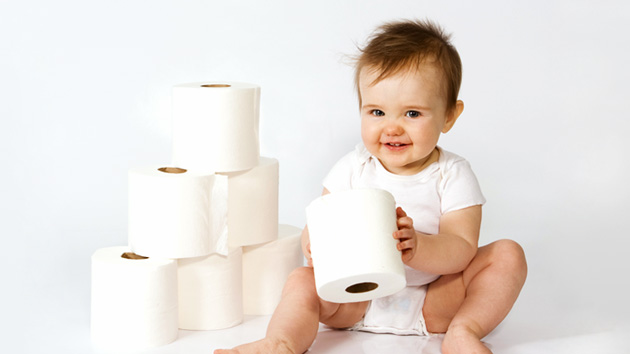Hi everyone...
My daughter Az-Zahra is 3 years old this year and she is talkative.. She talk almost about everything but then when she wanted to pee she never said it.. She will said it after she pee... It really makes me angry and this is happening for 3 times I teach her potting training...
It such a failure for me..and I stop trained her.. So do you have the same problem as mine? Here I will share to you how to get the job done.
Did you know potty training is a major milestone? You should get the facts on timing, technique and handling the inevitable accidents.Potty training is a big step for kids and parents alike.
The secret to success? Timing and patience.
Is it time?
Potty-training success hinges on physical and emotional readiness, not a specific age. Many kids show interest in potty training by age 2, but others might not be ready until age 2 1/2 or even older — and there's no rush. If you start potty training too early, it might take longer to train your child.
Is your child ready? Ask yourself these questions:
- Does your child seem interested in the potty chair or toilet, or in wearing underwear?
- Can your child understand and follow basic directions?
- Does your child tell you through words, facial expressions or posture when he or she needs to go?
- Does your child stay dry for periods of two hours or longer during the day?
- Does your child complain about wet or dirty diapers?
- Can your child pull down his or her pants and pull them up again?
- Can your child sit on and rise from a potty chair?
For Zahra my answer is almost YES!
If you answered mostly yes, your child might be ready for potty training. If you answered mostly no, you might want to wait — especially if your child has recently faced or is about to face a major change, such as a move or the arrival of a new sibling. A toddler who opposes potty training today might be open to the idea in a few months.
Ready, set, go!
When you decide it's time to begin potty training, set your child up for success. Start by maintaining a positive attitude — and recruiting all of your child's caregivers to do the same. Then follow these steps.
1. Pull out the equipment
Place a potty chair in the bathroom or, initially, wherever your child is spending most of his or her time. Have your child decorate the chair. Encourage your child to sit on the potty chair — with or without a diaper. Make sure your child's feet rest firmly on the floor or a stool.
Help your child understand how to talk about the bathroom using simple, correct terms. You might dump the contents of a dirty diaper into the potty chair to show its purpose, or let your child see family members using the toilet.
2. Schedule potty breaks
If your child is interested, have him or her sit on the potty chair or toilet without a diaper for a few minutes several times a day. For boys, it's often best to master urination sitting down, and then move to standing up after bowel training is complete.
Read a potty-training book or give your child a toy to use while sitting on the potty chair or toilet. Stay with your child when he or she is in the bathroom. Even if your child simply sits there, offer praise for trying — and remind your child that he or she can try again later. To maintain consistency, try to bring the potty chair or a portable potty with you when you're away from home with your child.
3. Get there — Fast!
When you notice signs that your child might need to use the toilet — such as squirming, squatting or holding the genital area — respond quickly. Help your child become familiar with these signals, stop what he or she is doing, and head to the toilet. Praise your child for telling you when he or she has to go.
Teach girls to wipe carefully from front to back to prevent bringing germs from the rectum to the vagina or bladder. When it's time to flush, let your child do the honors. Make sure your child washes his or her hands after ward.
4. Consider incentives
Some kids respond to stickers or stars on a chart. For others, trips to the park or extra bedtime stories are effective. Reinforce your child's effort with verbal praise, such as, "How exciting! You're learning to use the toilet just like big kids do!" Be positive even if a trip to the toilet isn't successful.
5. Ditch the diapers
After several weeks of successful potty breaks, your child might be ready to trade diapers for training pants or underwear. Celebrate this transition. Go on a special outing. Let your child pick out his or her underwear. Once your child is wearing training pants or regular underwear, avoid overalls, belts, leotards or other items that could hinder undressing.
6. Sleep soundly
Most children master daytime bladder control first, often within about two to three months of consistent toilet training. Nap and nighttime training might take months — or years — longer. In the meantime, use disposable training pants or mattress covers when your child sleeps.
7. Know when to call it quits
If your child resists using the potty chair or toilet or isn't getting the hang of it within a few weeks, take a break. Chances are he or she isn't ready yet. Try again in a few months.
So did you learn something from this technique? Lets together become a successful mother to potty training your kids!
Lets Potty Training!
source : Mayo Clinic Staff






my fren anak dia 14 months dah pandai kencing sendiri..respect gilerr.. 9 bulan dah start potty train.. tp lucky dia housewife.. tp susah jugak nak ajar budak 9 bulan cakap nak kencing..huhu..
ReplyDelete